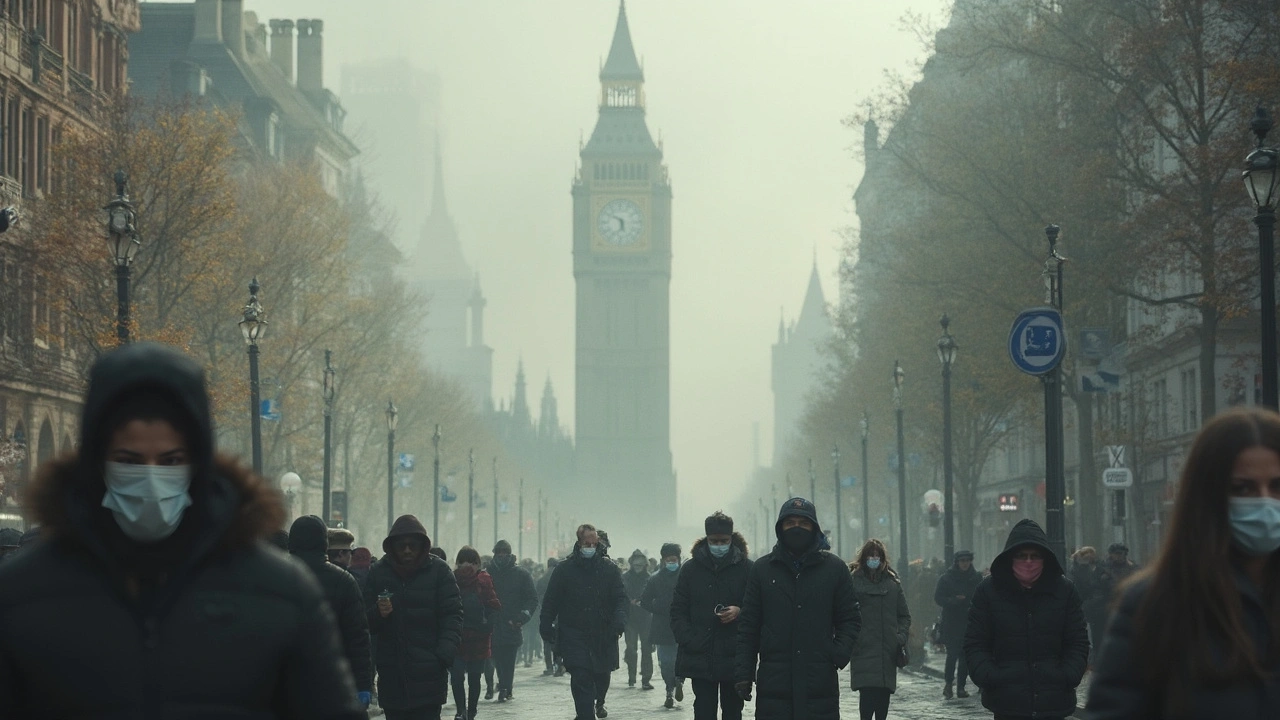Air Pollution: What It Is and How It Affects You
When you hear the word "air pollution" you probably picture smog over a city or smoky skies from wildfires. In reality, polluted air is a mix of tiny particles and gases that can sneak into your lungs every time you breathe. The most common culprits are particulate matter (PM2.5 and PM10), nitrogen dioxide, ozone, sulfur dioxide, and carbon monoxide. These pollutants come from traffic, factories, power plants, wood burning, and even natural sources like dust storms.
Why should you care? Because the air you inhale directly influences how you feel day‑to‑day. Short bursts of bad air can trigger coughing or sore throats, while long‑term exposure raises the risk of asthma, heart disease, and even certain cancers. The good news is that you don’t have to be a scientist to protect yourself—simple habits and quick checks can make a big difference.
Common Health Effects of Air Pollution
Even low levels of particulate matter can irritate your eyes and throat. If you already have asthma, polluted air can turn a mild wheeze into a full‑blown attack. For healthy adults, breathing in ozone or nitrogen dioxide may cause shortness of breath, chest tightness, or reduced lung function during exercise.
Heart health suffers too. Studies show that people living in areas with high PM2.5 levels have higher rates of hypertension and heart attacks. The tiny particles can enter the bloodstream, causing inflammation that stresses blood vessels. Over years, this adds up to serious cardiovascular problems.
The impact isn’t just physical. Bad air quality can mess with your sleep, lower concentration, and worsen mood. If you notice you’re more irritable on hazy days, it’s not just a coincidence—pollution can affect brain chemistry as well.
Practical Tips to Lower Your Exposure
First, check the air quality index (AQI) before stepping outside. Apps like AirVisual or government sites give real‑time readings and color codes: green is good, red means stay indoors if you can. When AQI spikes, limit outdoor workouts, keep windows closed, and use a HEPA filter if you have one.
At home, invest in a simple air purifier for the room you spend most time in—bedrooms and living rooms are top choices. If buying a new unit isn’t possible, place a bowl of activated charcoal or a houseplant like snake plant nearby; they help absorb some pollutants.
When you do need to go out on a bad‑air day, wear an N95 mask. It filters out at least 95% of particles down to 0.3 microns, which covers most harmful PM2.5. Make sure the mask fits snugly around your nose and mouth for best protection.
Reduce indoor sources too. Skip smoking inside, avoid using strong chemical cleaners, and vent your kitchen while cooking with a range hood that exhausts outside. If you use a wood stove, burn only dry, seasoned wood to cut down on smoke.
On the bigger picture side, consider greener travel options. Carpooling, biking, or taking public transport cuts traffic emissions that feed city smog. Even short trips to walk instead of drive shave off pollutants and improve your own fitness.
Finally, support community actions. Join local clean‑air groups, push for more tree planting in neighborhoods, or attend town meetings where air quality policies are discussed. Small collective steps add up to clearer skies for everyone.
Air pollution may feel overwhelming, but knowing the main sources, checking AQI daily, and using a few practical tools can keep your lungs healthier. Start with one change—like adding an air purifier or swapping a car ride for a bike—and watch how much better you feel when the air clears.

Air Pollution's Role in Idiopathic Pulmonary Fibrosis
Apr, 2 2025
